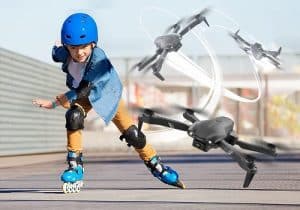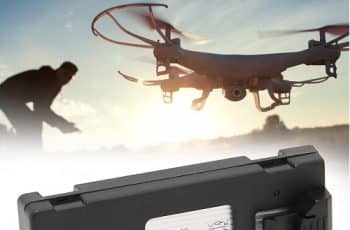How to choose the best fpv camera. Choosing the best FPV (First Person View) camera is a critical step for any drone enthusiast or racer aiming to achieve optimal flight performance and image clarity. With countless models on the market, each offering varying features, resolutions, and price points, understanding how to choose the best FPV camera can make all the difference in your flying experience. The right camera enhances real-time visuals, reduces latency, and improves navigation accuracy, whether you’re flying through tight indoor spaces or exploring wide open skies.
This guide will walk you through the essential factors to consider, including sensor type, field of view, latency, resolution, and compatibility with your FPV system. We’ll also compare top brands and highlight which cameras suit specific needs, such as freestyle, racing, or cinematic flying. By the end, you’ll know how to confidently select a high-performance FPV camera that matches your goals, budget, and drone setup, ensuring sharper images and smoother flights every time.
Because an FPV camera is possibly one of the most vital features in a racing drone FPV setup. You could also take some time to recognize the important things to think about to selecting the best one. Many pro pilots will confess that the picture that checked out on an FPV screen is like the FPV cam.
Contents
How To Choose The Best FPV Camera
Points to Think About When Choosing the BEST FPV CAMERAS
Size and Weight
The size and weight of an FPV camera can establish a whole lot, such as exactly how quickly the video camera can be affixed to the frame. Initially, FPV video cameras were once improved with a 32x32mm PCB, and they did not have any kind of protection. They are essentially described as “board video cameras”. The elements that make up the board cams are normally exposed and get damaged when drone collisions. Makers later made changes as well as started developing FPV video cameras for safety situations. Which has not come to be the standard technique today.
There Are 4 Key Sizes:
- Standard (28mm).
- Mini (21mm).
- Micro (19mm).
- Nano (anything smaller).
Committed FPV cams can weight anything between 4g to about 20g. There are FPV cams that are referred to as “AIO” (all-in-one) with an incorporated video clip transmitter. They are typically really little and also lightweight, nonetheless, the downside is that they do not produce excellent pictures. They are developed for smaller sized drones as well as are hardly ever used on larger drones.
Latency of FPV Camera
Latency describes the time it takes for an FPV cam to capture as well as process a photo. This hold-up between recording as well as refining an image varies from video camera to video camera. Latency is usually an aspect that many drone pilots who are into high-speed flying or drone racing take into consideration when buying an FPV video camera.
Latency is so crucial that maybe the distinction is between reacting to an obstacle while racing and crashing right into it. Visualize a drone flying at concerning 100km/h, a latency of concerning 0.05 s converts to your drone moving 1.4 m before you can react to obstacles.
We suggest that you test the latency of the FPV video camera you mean to purchase. It is not something that you can check as it is not printed on the spec.
CCD and CMOS.
These are the two primary sorts of picture sensors found in FPV cameras. CCD and CMOS both have their advantages and also one-of-a-kind features.
CCD sensor is the older modern technology that once was taken into consideration the best picture sensor utilized with FPV video cameras. Nowadays, CMOS is the sensors that are being made use of as well as keep improving with time.
Let us take a great deal at several of the advantages of both CCD and CMOS photo sensors.
CCD.
- They produce images with warmer shades.
- They generate less digital noise in reduced light problems.
- Their global shutter lowers the jello effect.
CMOS.
- They have lower latency.
- They generate higher resolution pictures, but they might also produce more electronic noise.
- The image colors are a lot more neutral.
- They are a whole lot cheaper.
- Moving the shutter tends to create a jelly impact.
- FOV (Field Of Vision).
- When you go FPV electronic camera shopping you are most like going to stumble upon FOV when given lenses with different focal widths.
Both focal length and sensor dimension are responsible for FOV. Therefore, recognizing your recommended FOV is very important when buying your FPV cam.
A larger FOV implies that you get to see even more of your setting, which is essential when racing or flying close. But if your FOV is also huge, your image could get distorted and also lose quality, which is often referred to as a fisheye effect.
NTSC or PAL.
This might be thought of as an essential aspect when selecting an FPV camera, as well as in some cases it is not so crucial. But we are including it just in case you wonder about it and how it can influence your experience.
Resolution and frame rate are the two points that separate NTSC from PAL. In terms of resolution, CHUM supplies better, while NTSC provides a lower price structure. If you are extra concerned regarding far better age quality, we suggest you choose PAL. Yet if a fluid picture is of even more relevance to you, NTSC is the format to go for.
PAL: 720 x 576 @ 25fps.
NTSC: 720 x 480 @ 30fps.
It is necessary to note that both NTSC and CHUM are tied to certain regions, i.e., NTSC is mainly used in North America, South Korea, Japan, while BUDDY is used in Australia, primarily Europe, Asia, and a huge part of Africa. We advise that you stick to the favored layout for your area, even though it doesn’t matter nowadays since the majority of formats are supported by all FPV devices.
FPV Camera Resolution/ TVL.
TVL or TELEVISION Lines is an approach to measuring analog FPV electronic camera resolution in FPV manufacturing. The measurement is based on how many black and white lines can be displayed in a picture in a straight alignment. What this suggests is that a camera with 600TVL can show 300 white lines and 300 black lines at the same time in one frame. As a result, the more TVL an FPV cam has, the better the quality and the clearer the image you will get. FPV video cameras feature TVL ranging from 600 to 1200.
While the TVL numbers may be thrown about on specifications, we encourage you to concentrate a lot more on the image quality of an FPV video camera. Find more information, check out our: UNDERGROUNDFPV
Related:



